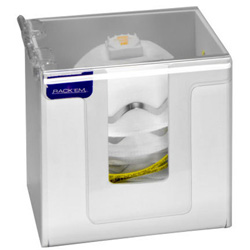| The Home page of ILPI's Safety Data Sheet (SDS) Resource, the leader in SDS information since 1995! | |
| The history and philosophy behind this resource. | |
| A curated collection of books and reference materials concerning Safety Data Sheets and closely related topics. | |
| Paste your plain text SDS into the SDS-Demystifier, and it will be converted into a hypertext-enriched document with links to detailed explanations of each key term. | |
| An extensive list of frequently asked questions about Safety Data Sheets including regulations, content, compliance, and more. | |
| A humorous take on Safety Data Sheet jargon. Fill in the blanks on our entry form to generate a personalized Unsafety Data Sheet to share with your coworkers. | |
| Since 1995, we've maintained this massive curated list of the best places to find Safety Data Sheets on the Internet. | |
| You are here! Way more than a glossary, this hypertext-enhanced resource covers hundreds of SDS-related terms and expert knowledge. Each entry includes both the SDS relevance and links to additional authoritative resources. | |
| Archived results of Safety Data Sheet related polls taken by some of our millions of site visitors | |
| The OSHA regulations behind SDS regulations, including the inspection guidelines and over 400 official interpretations letters under the Hazard Communication Standard | |
| Commercial suppliers of SDS authoring and management software as well as cloud compliance services. | |
| Commercial companies that will create SDS's for your specific needs as well as SDS translation companies. |

Safety signs, banners, and scoreboards? Get yours at Safety Emporium!
Definition
A chronic health effect is an adverse health effect resulting from long-term exposure to a substance. The effects could be a skin rash, bronchitis, cancer or any other medical condition.
The term is also applied to a persistent (months, years or permanent) adverse health effect resulting from a short-term (acute) exposure. For example, for most people exposure to the virus that causes COVID-19 causes short-term illness, however some patients experience a lingering chronic condition lasting months or years that is called "long COVID".

Make your PPE readily available with safety dispensers from Safety Emporium.
Additional Info
It may take months or years for a chronic health effect to become apparent. For example, inhaling low concentrations of benzene over long periods of time may lead to liver cancer. Likewise, chemical sensitization from exposure to low levels of formaldehyde may have a slow onset.
Another example is cigarette smoking. A smoker may take months or years to realize that their lung capacity is diminished, skin tone is decreased, or circulatory function is inhibited. The onset of these kinds of symptoms is so slow that it can be difficult to realize that one is suffering from adverse health consequences.
Of course, one has to keep chemical exposure and risk in perspective. A brief one-time (acute) exposure to a high concentration of benzene is incredibly unlikely to cause cancer or other lasting health effects. On the other hand, an acute exposure to a high concentration of formaldehyde carries an appreciable risk of causing long-lasting (chronic) health effect called chemical hypersensitivity.
Therefore, it is critical that you not only understand the hazards of workplace chemicals in terms of acute and chronic health effects, but the relative *risks* associated with such exposures. Remember, hazard and risk are two separate concepts. Hazards are inherent in a material regardless of the quantity. Risk is a measure of the likelihood of a hazard to cause harm. For example, gasoline has a significant flammability hazard. However, 3 drops of gasoline poses little risk whereas 10,000 gallons poses substantial risk, particularly if strict safety measures are not followed.
SDS Relevance
Both acute and chronic health effects will be listed in Section 11 (toxicological information) of a Safety Data Sheet. The sheet will explain how you can protect yourself from these hazards and reduce your risk in Section 8 (exposure controls/personal protection).
Chronic effects from long-term exposure to chemicals are fairly common. Recognize the PEL (permissible exposure level) for each substance in your workplace and minimize your exposure whenever possible.
Remember, the preferred methods for reducing chemical exposure, in order of general effectiveness, are:
- Substitution of less hazardous materials or processes.
- Engineering controls such as fume hoods or other ventilation.
- Administrative controls.
- Personal protective equipment (PPE).
As the name implies, Personal Protective Equipment protects only the individual person, not others in your workplace. PPE should always be your last line in a multi-layered defense to prevent chemical exposure.

Safety Emporium has a great lineup of gas cylinder signs, storage racks, clamps and more.
Further Reading
- U.S. EPA Final Test Guidelines for Pesticides and Toxic Substances, includes the Series 870 Health Effects Test Guidelines -- Final Guidelines with documents related to all kinds of acute and chronic toxicity testing.
- OSHA's page on toxic and hazardous substances including recognition, evaluation, controls, standards and more.
- The U.S. Agency for Toxic Substances and Disease Registry includes information about risk levels, FAQ's about toxic substances and more.
- Environment Canada's Management of Toxic Substances Web Site.
- The NIH's Toxicology Tutor is a great resource for learning the basics of toxicology.
- Play Toxic Trivia here at ILPI.
See also: acute toxicity, carcinogen, emphysema, lethargy, myalgia.